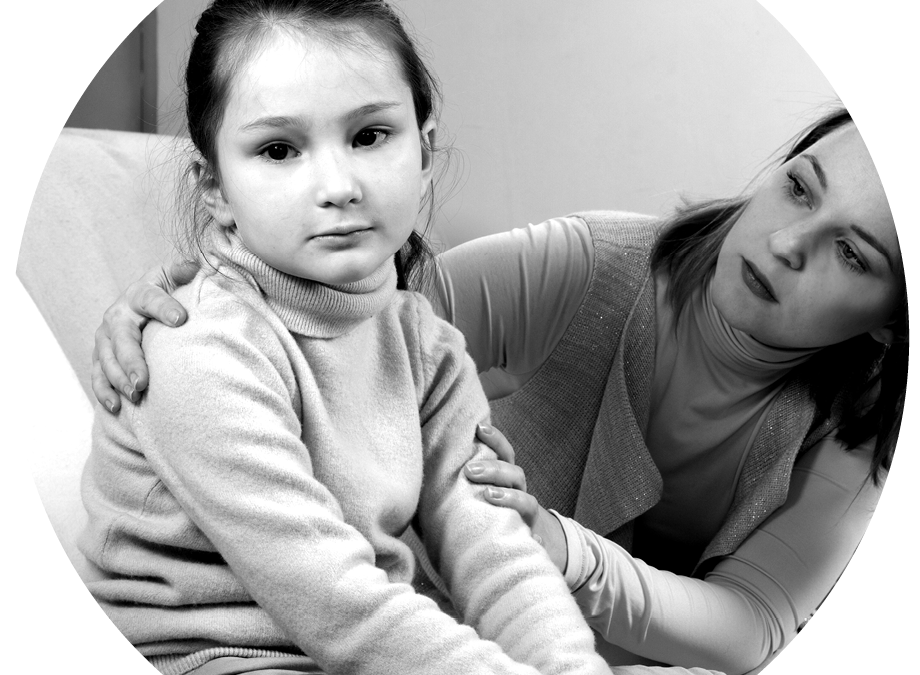
by IABA Team | Nov 9, 2021
ABA therapy is the only evidence-based ASD therapy, but the treatment only works if it is done with care. Not all ABA service providers are the same. How can you tell if your child’s treatment is being conducted correctly?
There are some red flags you can look for if you feel your child is not progressing or benefitting from ABA therapy. The points we are going to talk about won’t cover everything, but they will cover some of the most easily observable ABA therapy red flags.
We have split this article into two parts, as we want to mention why these red flags can be harmful and what you can do to notice them.
Too Many Hours of Therapy
ABA therapy is a billable medical expense. Like most medically billable services, some ABA therapy providers will look to bill for as many hours as possible. Most people don’t require 40+ hours a week of ABA treatment.
Be sure to look at your child’s program and what exactly is being done from a therapy standpoint. Does the program cover everything your child needs? Are the hours reasonable for the needs of your child?
A note that some people do need a lot of therapy, just not everyone. ABA therapy is not supposed to last forever. Your child will eventually be able to live an independent life with honed social skills. Too many hours of therapy is not something that will necessarily help with ABA therapy.
No Observation or Information
One of the most important aspects of ABA therapy is continuing a program at home. If an ABA service provider refuses to share information or allow observation you may want to take a closer look at the program.
Information should always be available on how your child is progressing. Daily records should be available to parents if they want to know what is going on in treatment. If an ABA service provider is unable to share information, it may be time to take a closer look. Quick note: information and records may take a few days to be logged, each clinic is different.
If you are not allowed to visit your child’s ABA clinic to observe treatment and progress you may have a problem on your hands. Dropping by without notice is not recommended, the situations we are talking about are never being able to observe your child’s clinic & program.
Another red flag related to this is a provider only using telehealth methods (phone calls, video chats etc) for BCBA supervision. A BCBA should be directly involved in each child’s program. The only exception to this is ABA providers located in rural areas, as they may be spread very thin and have a limited number of BCBAs.
Extremely Strict Behavior Requirements
ABA therapy works to help people with ASD adapt to neurotypical social norms. Having strict requirements to not allow normal ASD behaviors may lead to issues with many people.
If a therapy program doesn’t allow things like stimming, forces social interaction, or has eye contact requirements, you may want to take a closer look. Forcing behavior changes through programs or (worse) aggressive interactions is a huge issue for any ABA therapy program.
Some behaviors and issues will need to change over time, but forcing the issue through strict programs or adherence to certain behaviors is not the way to go. Be sure to routinely check your child’s program and progress if you think any requirements of the program are too strict.
ABA Therapy from IABA Consultants
If you have questions regarding autism treatment, education, or plans using ABA therapy, we are here for you! Our goal is to make sure no family is turned away due to financial constraints. Our therapy team would love to talk to you. Find the location closest to you and give us a call. We’re here for you.

by IABA Team | Jul 21, 2021
We know that finding good resources to help understand and learn about autism can be hard to find. There aren’t a lot of comprehensive resources on the internet, which can make it difficult to get information without consulting a professional. But what if you want to do a bit of research before contacting a therapist, doctor, or other Autism Spectrum Disorder (ASD) professional?
Thankfully there are some great resources available on the web if you know where to look. We put together a list of some of the best ASD resources on the web so you can start your research by going to the site with the best information for your specific needs.
Each of the following resources will be classified by a category to make it easier for you to find what you need. The ASD categories we will be using are general information, screening & testing, pediatric ASD resources, teen ASD resources, and important links.
We will provide information and brief summaries on each resource so you’ll have an idea of what information the site provides before going in. Feel free to skip to the category you are looking for information on; this article doesn’t necessarily need to be read from start to finish. That being said, the general information links are great resources for most ASD-related topics and questions.
General ASD Resources
These resources provide general ASD information and can be thought of as overviews. The sites in this section will focus on ASD as a whole; symptoms, when to test, where to go, options, FAQs, and other broad ASD-related information.
CDC ASD Information
CDC ASD Information & Resources
The CDC ASD is probably the best place to start for general information and answers to your questions. The information provided by the CDC is one of the most comprehensive ASD resources on the internet.
Topics the CDC provides information on include:
- What is ASD?
- ASD screening & diagnosis
- Treatments
- Research & tracking
- Data & statistics
- ASD-related articles
- Materials & multimedia
- Community reports
There is information on just about every general ASD-related topic available on the CDC website. Starting your journey here will give you a great general overview about what ASD is and what you can do to help.
Autism Speaks
Autism Speaks Website
Autism Speaks has some great information on what ASD is and provides resources & articles on many broad topics. The CDC provides a link to the Autism Speaks website, as it goes more in-depth on more specific ASD topics like finding therapy or treatment in your area, associated symptoms, screening, and fundraising.
Autism Speaks has been the target of some criticism due to their former goal of ‘curing’ autism. Their focus has shifted over the years, however, and their website remains a great resource for getting information and promoting awareness about ASD.
ASD Screening & Testing Resources
Screening & testing is the most important step in diagnosing ASD. The resources in this section provide lists, links, and more that can help you find ASD screening and testing in your area. The first section, CDC screening & diagnosis, goes over what to expect and how to prepare for an ASD screening.
CDC Autism Screening & Testing
CDC ASD Screening & Testing
The CDC page on ASD screening & testing is the best place to learn about general practices and procedures. The information provided by the CDC on this page is a generalized overview, but it has enough information to get you started on where to look and what to look for.
The Autism Community in Action Finding a Doctor
TACA Finding an ASD Doctor
This link starts with a more in-depth look at what to expect during ASD screening & testing followed by several links to help find a doctor in your area. The focus of this page is providing information that will help you get the treatment you are looking for.
The TACA Finding a Doctor page does a great job of explaining what you should look for and what to avoid when selecting an ASD doctor. Further information includes how to avoid getting stuck with unpaid costs from your insurance company and resources to help with this.
This is a fantastic resource if you are unfamiliar with billing practices related to ASD therapy or treatment. The links provided to find a doctor or, specifically, a functional medicine doctor can also help you to start your journey on the right path.
Pediatric ASD Resources
Autism therapy is commonly associated with children, as early childhood is the best time to diagnose and start treatment for ASD. Many of the ASD resources available on the internet focus primarily on childhood ASD and available treatments. We wanted to share a few of the more comprehensive options available if you are starting your search for pediatric ASD information.
Healthline Autism Doctors
Healthline Doctors Who Specialize in Autism
This short article contains a list of all the questions you should ask your child’s doctor about ASD and related treatments. The article gives a list of screenings & tests your doctor may use to determine if ASD is a concern.
While this article is short it is still a fantastic resource for parents who want to know more about how doctors diagnose ASD. The questions and lists provided in this article will help you prepare for what to ask your doctor and what you should expect during an ASD screening.
Verywell Health Developmental-Behavioral Pediatricians
Verywell Health Developmental-Behavioral Pediatricians Article
Like the Healthline link above, the Verywell Health Developmental-Behavioral Pediatricians article provides a short but informative look into ASD pediatricians.
Developmental-Behavioral Pediatricians (DBPs) are board-accredited pediatricians that have specialty training and certification that can help diagnose ASD. DBPs are some of the most experienced pediatricians when it comes to diagnosing and developing a treatment plan for ASD.
This article does a great job outlining the differences between a DBP and a traditional pediatrician, as well as where to find a trusted DBP in your area.
Official Journal of the American Academy of Pediatrics: ASD
AAP Identification, Evaluation, & Management of Children with ASD
This is a dense article written by several doctors for a medical journal. This bold warning is not meant to turn you away from this resource–just that it is a lot of information on one page.
Written in 2020, this AAP journal provides a comprehensive look into what ASD is, how it is identified & evaluated, and how to manage it. The information provided goes over many topics and is a great modern look into how doctors look at ASD and how they recommend managing it.
This journal can be downloaded as a PDF for easier reading, as the journal itself may be hard to navigate on a mobile phone.
Recommended reading if you really want to get insight into current medical information on ASD.
Teen ASD Resources
Information on ASD in teens and young adults can be more difficult to find than its pediatric counterpart. The two links in this section represent great places to start if you are looking for ASD information focused specifically on teens and/or young adults.
CDC ASD in Teens and Young Adults
CDC Teens & Young Adults with ASD
The shortest of our CDC links, this page is a brief overview of ASD in teens and young adults. Information on this page includes the difficulties teens and young adults with ASD may encounter and how to help. There are several links to help you get started on finding help and other resources for teen & young adult ASD.
SAP Counseling for Teens and Young Adults with ASD
SAP Teens & Young Adults with ASD
We wanted to include this counseling resource for teens and young adults with ASD. Teens and young adults have different things to worry about than children and this article takes an in-depth look at counseling and therapy. Teens and young adults with ASD may have difficulties adapting socially and this article gives information, options, and resources to help with this.
ASD Resource Links
The last section of this article will provide several large lists of ASD resources. These links will provide you with a great list of resources to get you started on finding the ASD information you are looking for.
CDC ASD Links
CDC ASD Links & Resources
This list from the CDC provides links to some important ASD resources on the web. The links lead to sites that talk about everything from diagnosis to finding treatment in your area. Each link has a description explaining what the linked site specializes in.
Reading Rockets Top Autism Organizations & Resources
Reading Rockets Top ASD Resources
This is a great list of ASD resources from a site focused primarily on encouraging children to read. The links on the Reading Rockets list include general information, articles for professionals, and financial aid information. A great resource from an unexpected source; all the links have descriptions about what they are about.
ABA Therapy from IABA Consultants
The information provided above is subject to change and the links are not owned by or associated with Instructional ABA consultants. If you have any questions, comments, or concerns about the above links, please let us know! Likewise, if you have any great ASD resources that we are missing, send them our way–we want to provide information and starting points for everyone who needs help with ASD.
If you have questions regarding autism treatment with ABA therapy, we are here for you! Our goal is to make sure no family is turned away due to financial constraints. Our therapy team would love to talk to you. Find the location closest to you and give us a call. We’re here for you.

by IABA Team | Jun 22, 2021
CLICK HERE FOR PART 1
What Does an ABA Program Involve?
Good ABA programs for autism are not “one size fits all.” ABA should not be viewed as a canned set of drills. Rather, each program is written to meet the needs of the individual learner.
The goal of any ABA program is to help each person work on skills that will help them become more independent and successful in the short term as well as in the future.
Planning and ongoing assessments are essential parts of a good ABA therapy program. A qualified and trained behavior analyst (BCBA) designs and directly oversees the program. They customize the ABA program to each learner’s skills, needs, interests, preferences, and family situation.
The BCBA will start by doing a detailed assessment of each person’s skills and preferences. They will use this to write specific treatment goals. Family goals and preferences may be included, too.
Treatment goals are written based on the age and ability level of the person with ASD. Goals can include many different skill areas, such as:
- Communication and language
- Social skills
- Self-care (such as showering and toileting)
- Play and leisure
- Motor skills
- Learning and academic skills
The instruction plan breaks down each of these skills into small, concrete steps. The therapist teaches each step one by one, from simple (e.g. imitating single sounds) to more complex (e.g. carrying on a conversation).
The BCBA and therapists measure progress by collecting data in each therapy session. Data helps them to monitor the person’s progress toward goals on an ongoing basis.
The behavior analyst regularly meets with family members and program staff to review information about progress. They can then plan ahead and adjust teaching plans and goals as needed.
ABA Techniques and Philosophy
Instructors use a variety of ABA procedures. Some are directed by the instructor and others are directed by the person with autism.
Parents, family members, and caregivers receive training so they can support learning and skill practice throughout the day.
The person with autism will have many opportunities to learn and practice skills each day. This can happen in both planned and naturally occurring situations. For instance, someone learning to greet others by saying “hello” may get the chance to practice this skill in the classroom with their teacher (planned) and on the playground at recess (naturally occurring).
The learner receives an abundance of positive reinforcement for demonstrating useful skills and socially appropriate behaviors. The emphasis is on positive social interactions and enjoyable learning.
The learner receives no reinforcement for behaviors that pose harm or prevent learning.
ABA is effective for people of all ages. It can be used from early childhood through adulthood!
Who is Qualified to Provide ABA services?
A board-certified behavior analyst (BCBA) provides ABA therapy services. BCBAs are required to have either a master’s degree or PhD in psychology or behavior analysis and be licensed in the state they practice in.
ABA therapy programs also involve therapists, or registered behavior technicians (RBTs). These therapists are trained and supervised by the BCBA. They work directly with children and adults with autism to practice skills and work toward the individual goals written by the BCBA. You may hear them referred to by a few different names: behavioral therapists, line therapists, behavior tech, etc.
Does ABA Therapy Work?
ABA is considered an evidence-based best practice treatment by the US Surgeon General and by the American Psychological Association.
Evidence-based means that ABA has passed scientific tests of its usefulness, quality, and effectiveness. ABA therapy includes many different techniques. All of these techniques focus on antecedents (what happens before a behavior occurs) and on consequences (what happens after the behavior).
More than 20 studies have established that intensive and long-term therapy using ABA principles improves outcomes for many but not all children with autism. “Intensive” and “long term” refer to programs that provide 25 to 40 hours a week of therapy for 1 to 3 years. These studies show gains in intellectual functioning, language development, daily living skills and social functioning. Studies with adults using ABA principles, though fewer in number, show similar benefits.
Is ABA Covered by Insurance?
Sometimes. Many types of private health insurance are required to cover ABA services. This depends on what kind of insurance you have, and what state you live in.
All Medicaid plans must cover treatments that are medically necessary for children under the age of 21. If a doctor prescribes ABA and says it is medically necessary for your child, Medicaid must cover the cost.
ABA Therapy from IABA Consultants
If you have questions regarding autism treatment with ABA therapy, we are here for you! Our goal is to make sure no family is turned away due to financial constraints. Our therapy team would love to talk to you. Find the location closest to you and give us a call. We’re here for you.
Sources
Autism Speaks ABA Primer

by IABA Team | Jun 15, 2021
What is Applied Behavior Analysis? Applied Behavior Analysis (ABA) is a therapy based on the science of learning and behavior.
Behavior analysis helps us to understand:
- How behavior works
- How behavior is affected by the environment
- How learning takes place
ABA therapy applies our understanding of how behavior works to real situations. The goal is to increase behaviors that are helpful and decrease behaviors that are harmful or affect learning.
What Does ABA Therapy Help With?
- Increase language and communication skills
- Improve attention, focus, social skills, memory, and academics
- Decrease problem behaviors
The methods of behavior analysis have been used and studied for decades. They have helped many kinds of learners gain different skills – from healthier lifestyles to learning a new language. Therapists have used ABA to help children with autism and related developmental disorders since the 1960s.
How Does ABA Therapy Work?
Applied Behavior Analysis involves many techniques for understanding and changing behavior. ABA is a flexible treatment:
- Can be adapted to meet the needs of each unique person
- Provided in many different locations – at home, at school, and in the community
- Teaches skills that are useful in everyday life
- Can involve one-to-one teaching or group instruction
Positive Reinforcement & ABA Therapy
Positive reinforcement is one of the main strategies used in ABA. When a behavior is followed by something that is valued (a reward), a person is more likely to repeat that behavior. Over time, this encourages positive behavior change.
First, the therapist identifies a goal behavior. Each time the person uses the behavior or skill successfully, they get a reward. The reward is meaningful to the individual – examples include praise, a toy or book, watching a video, access to a playground or other location, and more.
Positive rewards encourage the person to continue using the skill. Over time this leads to meaningful behavior change.
Antecedent – Behavior – Consequence
Understanding antecedents (what happens before a behavior occurs) and consequences (what happens after the behavior) is another important part of any ABA program.
The following three steps – the “A-B-Cs” – help us teach and understand behavior:
- An antecedent: this is what occurs right before the target behavior. It can be verbal, such as a command or request. It can also be physical, such a toy or object, or a light, sound, or something else in the environment. An antecedent may come from the environment, from another person, or be internal (such as a thought or feeling).
- A resulting behavior: this is the person’s response or lack of response to the antecedent. It can be an action, a verbal response, or something else.
- A consequence: this is what comes directly after the behavior. It can include positive reinforcement of the desired behavior or no reaction for incorrect/inappropriate responses.
How ABA ABCs Help
How different consequences could affect whether the behavior is likely to happen again
EXAMPLE:
Antecedent: The teacher says “It’s time to clean up your toys” at the end of the day.
Behavior: The student yells “no!”
Consequence: The teacher removes the toys and says “Okay, toys are all done.”
How could ABA help the student learn a more appropriate behavior in this situation?
Antecedent: The teacher says “time to clean up” at the end of the day.
Behavior: The student is reminded to ask, “Can I have 5 more minutes?”
Consequence: The teacher says, “Of course you can have 5 more minutes!”
With continued practice, the student will be able to replace the inappropriate behavior with one that is more helpful. This is an easier way for the student to get what she needs!
ABA Therapy from IABA Consultants
If you have questions regarding autism treatment with ABA therapy, we are here for you! Our goal is to make sure no family is turned away due to financial constraints. Our therapy team would love to talk to you. Find the location closest to you and give us a call. We’re here for you.
Sources
Autism Speaks ABA Primer

by IABA Team | Jun 8, 2021
Applied behavior analysis (ABA) is often described as the “gold standard” for autism treatment. Applied behavior analysis is a system of autism treatment based on behaviorist theories which, simply put, state that desired behaviors can be taught through a system of rewards and consequences.
ABA can be thought of as applying behavioral principles to behavioral goals and carefully measuring the results. While the idea of using rewards and consequences to teach behavior is probably as old as human civilization, the idea of carefully applying rewards and consequences to achieve specific, measurable goals is relatively new.
While many people are strong advocates of ABA because of its demonstrable success in achieving specific outcomes, others believe it is at best disrespectful and, at worst, actually damaging to the individual.
History of ABA Therapy
Dr. Ivar Lovaas, a behavioral psychologist, first applied ABA to autism in the Psychology Department at UCLA in 1987. He believed that social and behavioral skills could be taught, even to profoundly autistic children, through the ABA method.
The idea was (and is) that autism is a set of neurological conditions with topographical symptoms that can be modified. When autistic behaviors are no longer evident to the observer, the assumption is that autism itself has been effectively treated.
Whatever one’s opinion about Lovaas’s approach, his idea turned out to be quite correct: many if not most children who receive intensive ABA training learn to behave appropriately at least some of the time, and some even lose their autism diagnosis after years of intensive therapy.
Over time, Lovaas’s techniques have been studied and modified by therapists with slightly or significantly different visions of behaviorism. Techniques such as “pivotal response” and “language-based ABA” have become well-established autism treatments in their own right.
Several of these techniques bring together ideas from both the behavioral and the developmental realm, meaning that they focus not only on behaviors per se but also on social and emotional engagement.
What Can Children Learn Through ABA?
Most of the time, ABA therapy is intended to increase language acquisition and help get to developmental milestones. For example, ABA may be used to reduce outbursts and tantrums or to teach a child to sit quietly, use words to make requests, or wait for their turn in the playground.
ABA can also be used to teach simple and complex skills. For example, ABA can be used to reward a child for brushing his teeth correctly, or for sharing a toy with a friend.
While classic ABA can be used in a “natural” setting (a playground, for example), it is not intended to build emotional skills. So, for example, while ABA might teach a child to shake hands or greet another person with a handshake, it won’t help that child to feel an emotional connection with another person.
It takes an extraordinary therapist to use ABA to teach academic content, imaginative or symbolic thinking, or empathy.
How Does ABA Therapy Work?
The most basic Lovaas method starts with “discrete trials” therapy. A discrete trial consists of a therapist asking a child for a particular behavior (for example, “Johnny, please pick up the spoon”).
If the child complies, he is given a “reinforcer” or reward in the form of a food treat, a high five, or any other reward that means something to the child. If the child does not comply, he does not receive the reward, and the trial is repeated.
The specific content of discrete trial therapy is based on an evaluation of the individual child, his needs, and his abilities. So a child who is already capable of sorting shapes would not be asked to sort shapes indefinitely for rewards—but would focus on different, more challenging social and/or behavioral tasks.
The very youngest children (under age 3) receive a modified form of ABA which is much closer to play therapy than to discrete trials. As they master behaviors, well-trained therapists will start to take children into real-world settings where they can generalize the behaviors they have learned and incorporate them into ordinary social experiences.
ABA can also be used, in one of its many forms, with older children, teens, or even adults. Discrete trials ABA is still in use in some settings, and for some children. Other forms of ABA, however, are becoming increasingly popular, such as precision teaching.
In addition, rather than providing 1-to-1 therapy in a classroom or office, many therapists are now administering ABA in natural settings such as playgrounds, cafeterias, and community locations. This approach makes it easier for children to immediately use the skills they learn in a real-world situation.
Is ABA Right for Your Child?
ABA is everywhere, it’s covered by insurance, and it helps children with autism to use “expected” behaviors and control some of their more challenging impulses. These behavioral skills can make a big difference in how well your child manages school and social experiences.
A board-certified analyst (BCBA) provides ABA therapy services. ABA therapy programs also involve therapists or registered behavior technicians. These therapists are trained and supervised by the BCBA.
As with many approaches to autism, ABA is certainly worth a try, as it is the only evidence-based therapy for autism. Before getting started, however, be sure your child’s therapist is trained and knows how and where they will be working with your child, and work with your therapist to set up measurable goals. Keep a close eye on the process and outcomes.
Most importantly, be aware of your child’s responses to the therapist and the therapy. Is she excited when she “gets to” work with her therapist? Is she responding to the therapist with smiles and engagement? Is she learning skills that are helping her in her daily life?
If the answers are “yes,” you’re moving in the right direction. If not, it’s time to reassess.
ABA Therapy from IABA Consultants
If you have questions regarding autism treatment with ABA therapy, we are here for you! Our goal is to make sure no family is turned away due to financial constraints. Our therapy team would love to talk to you. Find the location closest to you and give us a call. We’re here for you.
Sources
Verywell Health ABA Blog






